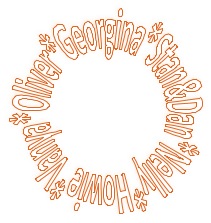Creating Characters: FRIENDS
Although Frank, in my story FROM THE GRAVE, is a misfit, he has a number of friends. Unfortunately, they are all considered misfits also.
Frank’s best friend Oliver is a half-wrapped mummy who is more interested in reading than staying bundled up. Georgina is a dragon who is quite good at flying, but she can’t shoot fire at all. In fact, all she can do is snort out a blast of water when she sneezes. Stan & Dan are the two heads of one goofy gargoyle. They love to tell jokes—only monsters should NOT be funny.
Frank has an enemy too—Malcolm McNastee. He’s a sinister troll who hates misfits and does everything he can to destroy Frank. How will Frank ever stand up to him???
Does your monster character have friends? Enemies? What are they like? How do they help or hinder your main character (protagonist)?
You can use the Character Chart from Part 3 to explore these supporting characters in your story. Make a separate chart for each one. The more you know about your supporting characters, the more you’ll know how they will interact with your protagonist.
*TIP: Often for me, it is through the writing process itself that I come to know my characters better. Do some planning and research, but don’t wait too long to jump into your writing! Exciting, amazing things will happen when you let your characters out on the page. 🙂
Below is a circle graphic of Frank’s friends. Who are the characters surrounding your protagonist?







